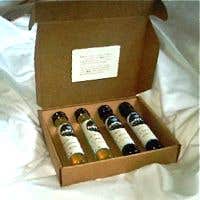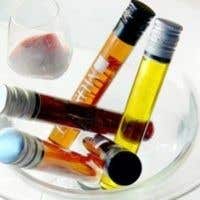I have long thought that there are several fortunes to be made by enterprising industrial designers prepared to help us wine lovers out with some of our practical problems.
The most obviously lucrative opportunity for some lateral thinker is to come up with a new wine bottle stopper. Do screwcaps and glass stoppers à la  Vinolok (pictured) really represent the limits of human ingenuity when it comes to dreaming up an alternative to the cylinder of cork bark that we have contented ourselves with for centuries? Surely there are other options – perhaps more obvious to someone who is not a habitual wine drinker and therefore not conditioned to accept a cork as the status quo. Rather the same way as the new owner of a house is so much better placed to work out how it can be improved than someone who has been living there for years.
Vinolok (pictured) really represent the limits of human ingenuity when it comes to dreaming up an alternative to the cylinder of cork bark that we have contented ourselves with for centuries? Surely there are other options – perhaps more obvious to someone who is not a habitual wine drinker and therefore not conditioned to accept a cork as the status quo. Rather the same way as the new owner of a house is so much better placed to work out how it can be improved than someone who has been living there for years.
A prerequisite for real technical ingenuity seems to be the ability to think outside the norms to devise something devastatingly simple. I was so impressed by the winner of a young inventors' competition recently, who, frustrated by the awkward bulk of the plug on his wafer-thin Apple Mac, designed a plug which could be folded flat by rotating various parts of it.
What I'd like to see as a new, alternative stopper is something that turns out to be so obvious that we all kick ourselves for not having thought of it before. Perhaps we even need to give up bottles and adopt an entirely new wine package altogether?
Anyone who can design a successful new wine package is guaranteed a fortune. I would also suggest that, now that wine is so regularly and enthusiastically drunk throughout the world, rather than exclusively in temperate zones, there is another fortune to be made by someone who can design a wine glass that regulates the temperature of the wine inside it. I find myself increasingly frustrated in places as dissimilar as Sydney and Sonoma by the speed with which a wine, poured ice-cool into the glass, becomes soup in the ambient heat.
One of the great wine service inventions I have seen in my lifetime, along with the foil cutter (yes, children, we used to have to cut our own foils – and a very messy job I used to make of it too), is the vacuum wine bottle holder that keeps a bottle of wine at a constant temperature without the weight, water, energy and drips associated with an ice bucket.
Please may we have some possibly similar technology that could be applied to wine glasses? Obviously it will be more challenging because we wine drinkers treasure nice, thin, completely transparent glass with a correspondingly fine rim, but perhaps there is some new material that could be used as a jacket for the central part of the bulb of the glass? Actually, come to think of it, decanters guaranteed to keep wine temperatures constant would be useful too. Think of all the creativity and money that has gone into contraptions supposedly designed to add instant maturity to wines. Those I have come across have ranged from magnetic mats to magic stirrers which, their manufacturers claim, instantly substitute for decades in the cellar. I must say that I have yet to be convinced by the performance of any of them.
I would much rather this sort of ingenuity had been channelled into creating something that would be genuinely, and extremely practically, useful for the increasing numbers of us who like to record our tasting notes electronically. Having a website to feed, I find this saves hours of transcription, although I have yet to find the perfect system. Laptops can be quite bulky and heavy. Even the new generation of netbooks can take up more space on a tasting table than is convenient for your fellow tasters. Yet if you like to type using two hands, you almost inevitably need somewhere to put your keyboard, however tiny. Some people suggest that a little recorder using voice recognition would be a neat solution but I disagree. Firstly, I write at least 90% of my notes with my mouth full of wine. (Perhaps this is a bad habit but I've got it.) And secondly, I would much rather that the person who poured me the sample, often the winemaker, did not hear my comments. I congratulate American wine writer David Schildknecht on managing to dictate all his tasting notes but I know I couldn't do it myself, and I would hate to have to transcribe them all.
No, the invention I seek is a light, possibly folding, tray that we wine tasters could hang round our necks rather like the trays that cigarette or ice cream vendors used to use. It should be small enough to fit into a bag or briefcase and strong enough to hold a laptop or netbook. Ideally, it would incorporate a spittoon as in my experience tasters spend at least as much time locating spittoons as tasting wine. And then perhaps there could be the de luxe version that automatically converts our sensory impressions into perfectly spelt and articulated tasting notes….
What is, delightfully, not a pipe dream is the invention of a brilliant new bottle for wine samples and small serves of wine from a French company called WIT France (www.witfrance.com). Like the perfect invention, it is devastatingly simple. WIT France sell small, stylish tubes with airtight,  crimped screwcaps in sizes that hold 4, 5, 6 or 10 cl of liquid along with the bottling technology that reliably keeps oxygen out of the tubes for six months to a year – all of it patented. They also sell neat but sturdy cardboard boxes that hold various different numbers of samples which cut down enormously on the amount of material, space, weight and money required to send samples.
crimped screwcaps in sizes that hold 4, 5, 6 or 10 cl of liquid along with the bottling technology that reliably keeps oxygen out of the tubes for six months to a year – all of it patented. They also sell neat but sturdy cardboard boxes that hold various different numbers of samples which cut down enormously on the amount of material, space, weight and money required to send samples.
All of this seems such a blindingly obvious and sustainable alternative to shipping whole 75cl bottles of wine samples around the planet, together with the often hugely wasteful packaging needed to stop them breaking. (Down with polystyrene...) For example, a set of samples of four different wines was sent to me from San Francisco to Singapore and took up about the same space and weight as a modest paperback. When I got back home to London I found my home invaded by dozens of massive cardboard and even wooden boxes full of full-size wine bottles from which I needed just a few centilitres to taste.
I'm told that the WIT France bottling technology needs considerable outlay, but I for one think it could be well worthwhile.

